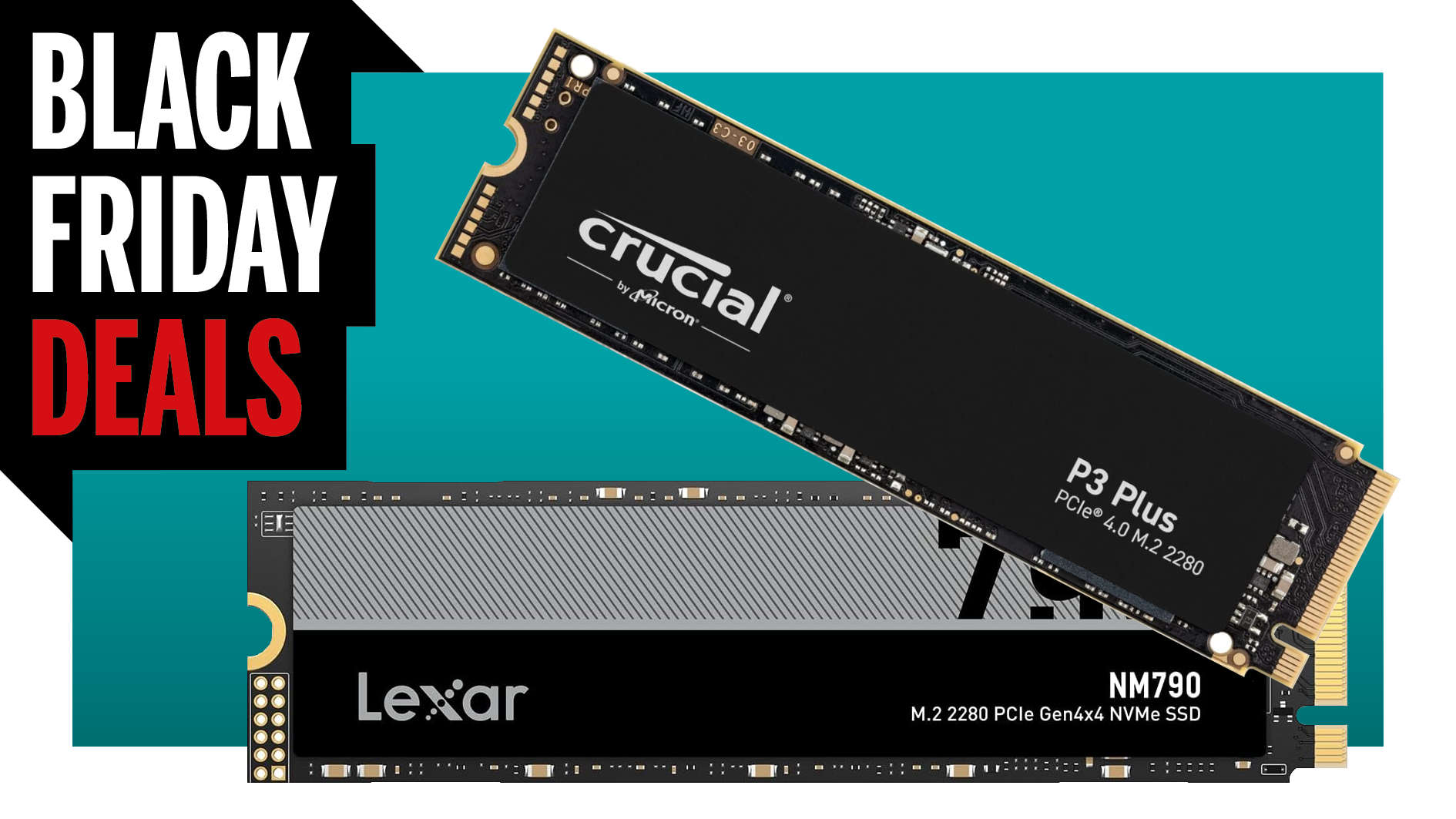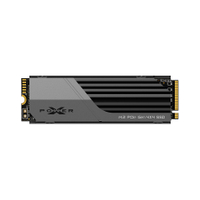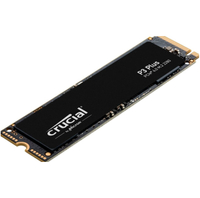Forget the other sizes and types, 2TB drives are the sweet spot for a Black Friday SSD upgrade
Grab one before the inevitable price rise kicks in next year.

Silicon Power XS70 | 2TB | NVMe | PCIe 4.0 | 7300 MB/s Read | 6800 MB/s Write | $104.99 at Newegg
If you're looking for outright performance, but don't want to spend too much then this XS70 is a great choice. We though the software was a bit lacking when we reviewed it, but the performance absolutely wasn't. Exactly what you need from an SSD.
Price check: Amazon $109.99
With installation sizes growing ever bigger, it only takes a small number of games before the average drive fills up. The only solution to this is to either add additional storage or replace what you currently have with something more capacious. And right now, the best ones to go for are 2TB NVMe PCIe 4.0 SSDs.
I know 1TB SSDs (solid state drives) are super cheap at the moment and in terms of sheer value for money, a 4TB HDD (hard disk drive) offers masses of space for relatively little money. But if you're looking for a new drive in this year's Black Friday sales, then I strongly recommend that you just look for a good 2TB SSD deal and ignore the rest.
Especially if you get an NVMe PCIe 4.0 model because, regardless of what gaming PC you have right now, if it has an M.2 slot then it will happily take one of those SSDs.
- We're curating all the best Black Friday PC gaming deals right here.
But let me stop for a moment and talk about capacity first. With the likes of Baldur's Gate 3 and Starfield both taking up 120GB of storage, you'd only have room for another six games of a similar size before running out of space on a 1TB drive. And when there are several well-priced, speedy 2TB SSDs out there—and some for less than $100—it's hard to say no.
Crucial P3 Plus| 2TB | NVMe | PCIe 4.0 | 5,000MB/s read | 4,200MB/s write | $89.99 at Amazon
This isn't the fastest 2TB NVMe drive out there but it's still fast enough for most people, and you're getting a mountain of storage for well under $100. What more do you need?
Price check: Best Buy $109.99 | Newegg $97.59
Lexar NM790 | 2TB | PCIe 4.0 | 7,400MB/s read | 6,500MB/s write | $124.99 $109.99 at Amazon (save $15)
When we tested the 4TB version of this drive, the outright speed was really impressive and this smaller capacity model is just as impressive. It's the perfect example for why 2TB SSDs are the ideal choice: ultra fast, lots of space, and a really long lifespan.
However, it's not just about how much room is available on your SSD.
The memory cells inside the chips on an SSD have a finite lifespan. They can only be written to and erased so many times before they fail. You need to do this a lot before it becomes a problem but the more space your solid state drive has, the longer it will actually last.
This is because the cells get used in sequence and only get rewritten once every other cell has undergone at least one write/erase cycle. So the more cells there are, the longer it will take for any one of them to be used again, thus extending the life of the drive.
Lexar NM790 | 4TB | NVMe | PCIE 4.0 | 7,400MB/s read | 6,400MB/s write | $209.99 at Amazon
This has swiftly proven itself one of the best ways to stuff 4TB inside your gaming PC. You can read up why in our Lexar NM790 review I published very recently, but the short version is it's as fast as the fastest PCIe 4.0 drives yet rather cheap.
Price check: Newegg $259.99
So why not go all out and get a 4TB SSD? Solid state drives that size typically use the slowest type of memory cells and if you want your gaming storage to be as speedy as possible, it's better to stick to a smaller capacity until the technology improves.
That said, the above Lexar model is just as fast as the 2TB version, but at over $200, it's a lot of money to spend on a drive. Given that you can get a decent 2TB drive around $90, that size is a far more tempting upgrade prospect.
If your gaming PC is a few years old, it might only support PCIe 3.0 SSDs but don't worry. PCI Express is backward compatible and will automatically set itself to the correct speed. So you can pick up a PCIe 4.0 drive and it will work fine in a 3.0 slot, though the peak performance of the SSD will be reduced.
In most scenarios, this is unlikely to ever be a problem because, as the name implies, peak data transfers only take place over very short periods of time. What's more important is sustained performance and the 2TB SSDs are really good at this.
And speaking of data speed, HDDs just aren't fast enough for today's biggest games. It's becoming the norm for publishers to list SSDs as being a requirement and that's down to the PlayStation 5 and Xbox Series X/S using one for storage. Few game developers are going to optimize a project for HDDs when it's much easier to just change the hardware demands.
If you're still using a hard disk drive to store all your games or an older 500GB SSD, now is the perfect time to grab a Black Friday SSD deal and enjoy the sheer speed and cavernous space a modern 2TB NVMe drive has. Prices are expected to rise next year and it will take a year or two before they cycle back down again, so why wait and end up paying more?
The biggest gaming news, reviews and hardware deals
Keep up to date with the most important stories and the best deals, as picked by the PC Gamer team.

Nick, gaming, and computers all first met in 1981, with the love affair starting on a Sinclair ZX81 in kit form and a book on ZX Basic. He ended up becoming a physics and IT teacher, but by the late 1990s decided it was time to cut his teeth writing for a long defunct UK tech site. He went on to do the same at Madonion, helping to write the help files for 3DMark and PCMark. After a short stint working at Beyond3D.com, Nick joined Futuremark (MadOnion rebranded) full-time, as editor-in-chief for its gaming and hardware section, YouGamers. After the site shutdown, he became an engineering and computing lecturer for many years, but missed the writing bug. Cue four years at TechSpot.com and over 100 long articles on anything and everything. He freely admits to being far too obsessed with GPUs and open world grindy RPGs, but who isn't these days?




